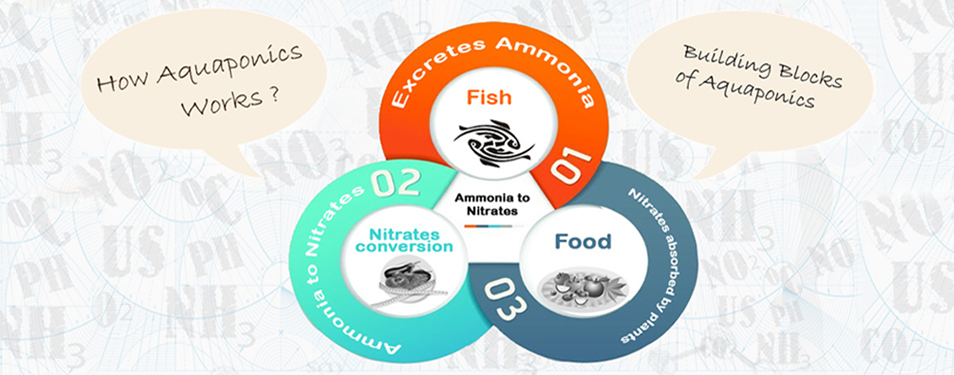Aquaponics is an amalgam of “Aquaculture” & “Hydroponics” resulting in sustainable food production system. This technique of growing food is based on natural process called “NITROGEN CYCLE” where ammonia excreted by fishes is broken down into useful nutrients. These nutrients are then being absorbed by plants for their growth and water is re-circulated back into the system.

In comparison to conventional farming or using chemical base solutions/ nutrients to grow plants, Aquaponics uses nutrient rich fish effluent water that contains almost all the nutrients for optimal growth. There is no loss of water or need to discharge water into drain as plants clean and purify the water that can be recirculated back to the fish tank. The water is only added to the system to cover the loss through transpiration and evaporation.
|
Various Systems in Aquaponics

|
- Raft Based Systems : Commonly known as Deep Water Culture (DWC) or Shallow Water Culture (SWC) uses rafts that floats on top of nutrient rich water after filtration. The plants are placed in holes/Grow Spots and roots float / dangle down into the water. The raft method of growing in Aquaponics is currently the most widely used in Commercial Applications and one that is the most forgiving and easy to operate.
- Media Based Systems: Plants are grown in inert planting material such as Hydrotons / Volcanic Lave Rock / Expanded Shale / ¾” gravel or in a combination. The advantage of media is that it acts as filtration unit and also provides the surface for biological growth thus enhancing the nutrient build-up.
- Nutrient Film Technique (NFT): Plants are in channels where thin layer of nutrient rich fish water is run through them, providing a film of nutrients to plant roots.
- Hydrid Systems: As the name suggests it’s a combination of two or more of the above systems put together. These systems provide higher planting flexibility, high productivity and are ideal for URBAN SUSTAINABLE FARMING.
|


